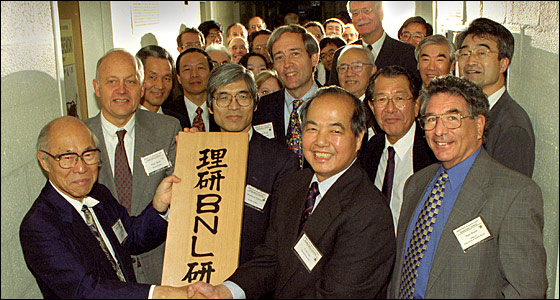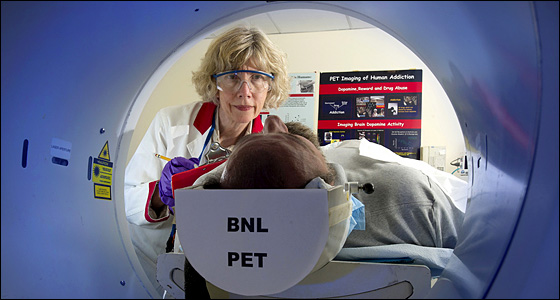BNL Timeline
APS Historic Site Home > BNL Timeline > 1980-1990
1980-1990
The Accelerator Test Facility starts providing experimenters with equipment to advance accelerator technology that’s small and more cost-effective. Operations also start at the Laser-Electron Accelerator Facility, a picosecond laser-electron accelerator facility at Brookhaven’s Center for Radiation Chemistry Research.
The Alternating Gradient Synchrotron (AGS) begins accelerating gold nuclei to study high-density matter, which, along with the already existing proton program, paves the way studies for at the Relativistic Heavy Ion Collider (RHIC). A few years later, AGS achieves the highest baryon (protons, neutrons, and other particles made up of quarks) density in gold-gold collisions. Scientists at the AGS also spot (for a second time) one of the rarest occurrences in the subatomic world: the decay of a kaon into a positively charged pion, a neutrino, and an antineutrino.

Scientists from RIKEN in Japan and Brookhaven Lab celebrate the opening of a joint research center
As part of the lead-up to RHIC, the RIKEN-BNL Research Center is established and dedicated to the study of spin physics and quantum chromodynamics (QCD) the model of matter based on the “strong force” that binds quarks and gluons in the particles that make up the center of every atom in the universe.

Using positron emission tomography, Brookhaven researchers unlock the mysteries of addiction and other pathologies
At the National Synchrotron Light Source, researchers discover that a fundamental type of energy state known as a “quantum well” can be spin-polarized. Other condensed matter physicists find evidence that the electronic structure of high-temperature superconductors consists of fluctuating strings of charge, known as stripes.
With positron emission tomography, the development of which was pioneered at BNL, Brookhaven scientists are the first to report that people addicted to cocaine, alcohol, and heroin show reduced activity in their brain’s dopamine system.